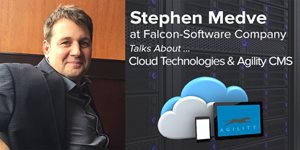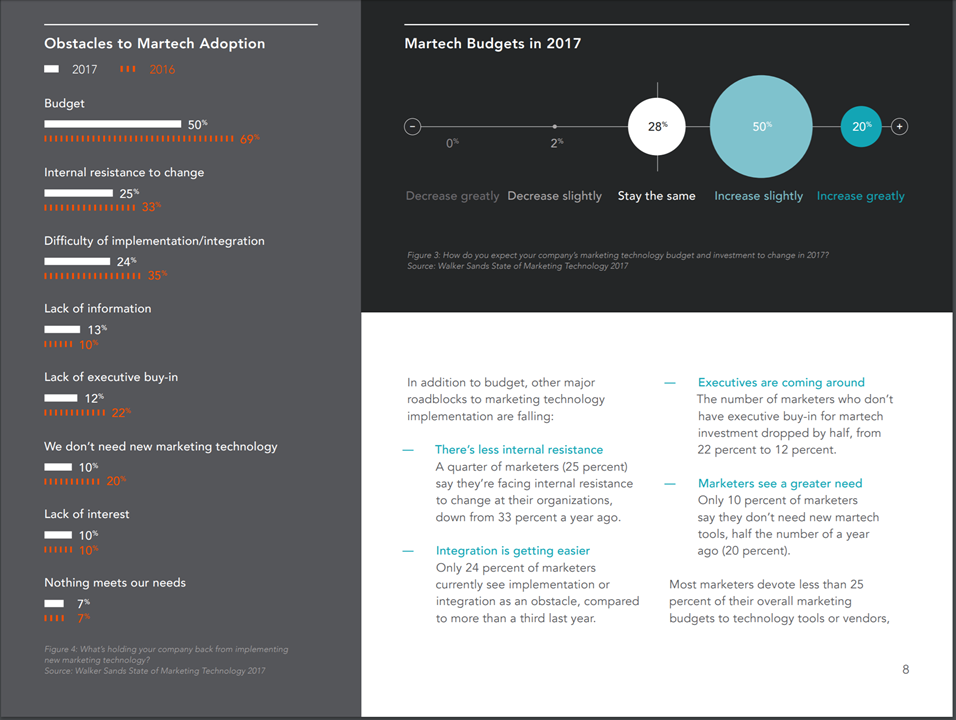Cloud Technologies Save You Time, Money & Resources
True cloud-based products are no longer in their infancy. With companies such as Agility CMS having been  built from the ground up as a Cloud platform, these solutions are no longer being looked at as a fringe approach to the market, as there is now a true monetary return to using this approach.
built from the ground up as a Cloud platform, these solutions are no longer being looked at as a fringe approach to the market, as there is now a true monetary return to using this approach.
Let’s take Agility CMS for instance. This is a platform that allows you to operate an entire .NET infrastructure in the cloud, and allow resources to manage all the pieces within that cloud environment. Agility will manage the hosting and server infrastructure, and allow you to be able to develop, design, integrate, and deploy within a cloud target environment, and this has some massive benefits.
Infrastructure Costs – If you are a medium, large, or enterprise company, and you are managing and/or paying for on-premise hosting, you are multiplying the costs that you would pay for cloud services. For instance, if you are a global or segregated company, there is a good chance that you have different types of development environments, and infrastructure practices, and because of this challenge, you now have to spend significant resources to be able to support those different stacks. This makes it challenging to utilize cross-market resources, as time and money are used to try to integrate and train resources into these different technologies that ultimately do the same thing.
If you are using Agility CMS, you would be able to leverage a global infrastructure, and spin up separate instances of the product, and add a significant amount of persistent governance as a whole to your business. You would be able to train your teams consistently, and know that you have the ability to utilize resources where or whenever you need them, and allow them to focus on a single platform so that operational efficiencies can be had. You would also be able to leverage global assets, as Agility would allow access to any assets within the cloud environment.
Complex Architecture – If you have a myriad of technologies making up your digital landscape that are a challenge to work with, these can be extremely disruptive in moving your brand forward. Time and time again, I hear the message that “our company is reactive, not proactive”. Especially if you are a company that grows through acquisition, and the acquired company is using a completely different architecture. These are the most common pain-points I hear on a daily basis:
-
Loss of productivity due to support, training, and lack of product knowledge
-
Increased costs to onboard resources
-
No global access to administrative tasks or assets
-
Increased security risks
-
Integration is extremely difficult to manage
Having to focus on these pain points, you are not moving the brand forward. You are sitting in a boardroom being reactive to situations that constantly rear their ugly head. A cloud-based platform like Agility CMS can allow for these conversations to be minimized, if not go away, and allow for more forward-thinking discussions such as; creating a global digital ecosystem; providing a better customer journey and experience by utilizing resources that have proven success; better focus on being pro-active with customers to increase ROI.
Applying New Features – With current on-premise infrastructures, you have a significant cost to upgrade your platform to apply the newest groundbreaking features. This product upgrade can range from $10,000 to $250,000+ in costs. So even if you want those new features, and can explain how they will help add significant value to your organization, there is a cost, as well as the time and resources needed will be incurred. Internally this can be challenging to sell leadership for the benefit of the new features, as the upgrade cost can stop discussions as it becomes a high-risk venture, and ROI cannot be proven.
So if you want the ability to take advantage of new features, such as Agility’s new commerce module, you’ll be able to leverage it, as it becomes available the minute they apply it to the cloud infrastructure. This now becomes an exciting conversation internally, on how best to roll-out and deploy these features, without the burden of complicated costs for upgrades.
Headless Environment – A best-of-breed approach to the market helps organizations leverage what they have, and what technologies best suit their needs. It becomes a huge pain if a platform does not have the ability to allow different programming languages to be used to create integration points from one system to the next. Having to find and/or train resources to use a piece of technology can be a huge frustration, as it becomes an HR or a service contract problem that needs to be solved first before moving forward with a project.
Most Cloud-based solutions like Agility CMS have the ability to create an agnostic approach to technology by leveraging a rest API, and a method to integrate smoothly into other technology stacks. With content management being a backbone platform for digital architecture, this should be one of the top reasons to move and use a cloud-based system like Agility CMS, as technology spend is only increasing in the upcoming years.

On a final note, there is a lot of confusion on cloud technologies. There are platforms that use the term “cloud”, but are only leveraging Microsoft Azure, or Amazon Web Services features, by allowing a partner to push the product offering into the cloud, but still need to be managed by a partner, and still need to incur upgrade cycles, as the platform is not a true cloud technology.
This is where a platform like Agility CMS is different. This is a “true” cloud technology where the infrastructure is managed by Agility themselves. You don’t have to wait for a third-party implementation company to roll out a security patch, hotfix, new feature, as this can be completed by the architects who designed and built the platform. As more customers keep moving into these true cloud platforms, this will grow the overall capabilities of the product, as the benefits from other organizations will migrate quickly to everyone else, and benefit everyone as a whole. So if you are looking to increase your overall “Return on Investment”, these are some compelling arguments to have internally.

Stephen Medve
Stephen Medve is the Senior Analyst at CMSC Media. For the last 12 years, Stephen has been working as a Sales Consultant and Solution Advisor helping medium, large, and enterprise companies select their backbone IT ecosystems which include ECM, WCM, CRM, and eCommerce and digital marketing platforms.